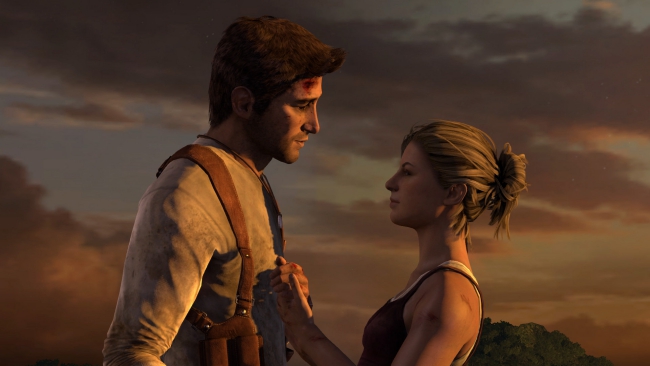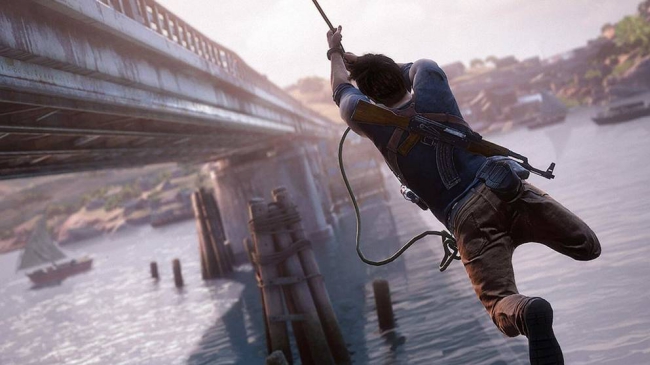PlayStation LifeStyle’s character-focused column places emphasis on one character, such as Metal Gear’s Raiden. This entry will spotlight Uncharted’s Nathan Drake, who, apart from his unnerving penchant for risk-taking, represents the everyman figure, someone with whom the audience can easily identify. Sure, he’s unusually intelligent, gifted even, and a little dangerous if he becomes too obsessed with one goal. These aren’t his most interesting qualities, though.
Most intriguing is the adventurer’s position in PlayStation history, perhaps even gaming history at-large. Amongst the pantheon of world-famous PlayStation mascots, so to speak, Drake arguably counts as one of the first relatively normal characters. Why is that exactly? Was 2007 the right place, right time for such a hero, or did something about him truly stand out? Hopefully, we’ll have determined as much by column’s end.
From the God of War to… Treasure Hunter?

Prior to Nathan Drake, PlayStation icons were typically of an animated variety, for lack of a better term. During much of the PlayStation 1 era, a purple dragon and bandicoot were to the Sony platform what Mario represented for Nintendo. It seems fair to argue another character of this caliber wouldn’t come along for PlayStation until the PS2’s God of War in 2005. While Kratos lacked the cartoony nature of Spyro or Crash, his exaggerated behavior and appearance, as well as his exceedingly low emotional intelligence, ensured he couldn’t necessarily qualify as relatable.
2007 saw the advent of a different kind of PlayStation icon, an average man with an average appearance, build, and so on, his most unique characteristics being his vast knowledge of history and remarkable luck. But what notably stood out with regards to Drake was his charm, sense of adventure, and relationships with other characters. Unsurprisingly, these traits all factor into his meteoric growth in popularity.
Interestingly, 2007 was pivotal for gaming beyond Uncharted’s debut. BioShock launched the same year, as did the first Assassin’s Creed and Mass Effect entries. Evidently, a more substantial number of games were beginning to accentuate the significance of character and story. Enter the likes of Nathan Drake, whose dynamism, in many respects, remains unmatched.
Friendly Neighborhood Treasure Hunter

Few characters in games behave in a manner we would deem natural. For instance, if Drake tumbles from a cliff and miraculously lands unscathed, he’ll mutter an expletive, then quickly voice surprise at not falling to his death. Sometimes his words perfectly mirror whatever the player is murmuring in front of their television screen. How many other characters react to the world around them in a similar fashion? At present, it seems PlayStation exclusives lead the charge on this front, as Guerrilla Games and Bend Studio have apparently taken a page from Naughty Dog’s book with Horizon Zero Dawn’s Aloy and Days Gone’s Deacon, respectively. Spider-Man (or Peter Parker, as much of the game’s focus may be) in Marvel’s Spider-Man from Insomniac counts as another.
Therefore, Drake for several years was in a league of his own, a fully developed, three-dimensional character, written and portrayed in way that oozed realism, despite the bizarreness of his adventures. Perhaps this constitutes what makes him so special. He isn’t special at all. To an extent, he bears a lot in common with Peter Parker—normal and simple, until the responsibilities of being Spider-Man crash in. And even then, the qualities that make Peter Parker identifiable manage to seep into the webslinger.
Drake arguably rose to the top for the same reason Spider-Man did in the 1960s, for the same reason Robin did before him. After years of heroes in a medium that no one could possibly understand, it was high time someone came along to show the audience what they’d been missing. A vessel with which they could truly see themselves experiencing adventures that could only ever be imagined on-screen.





